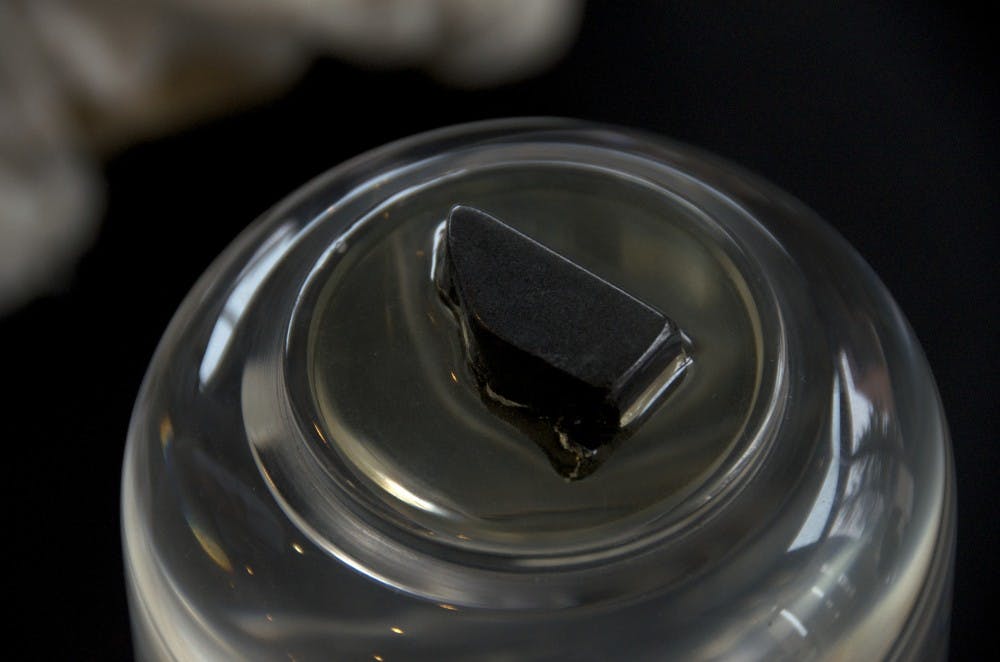Students had a chance to hold one of eight moon rocks on Earth available to the public. The rock was available as part of a NASA official presentation on the International Space Station on Friday at Prius Hall.
One of the holders of the rock was an elementary student at Burris Laboratory who has a love for the stars.
“It’s not like other rocks, it’s so smooth,” said Gregory Gaydos, a Burris Laboratory elementary student. “I am a big fan of space, and I have two telescopes at home. I just love to look at the stars, and [I love] aliens.”
The moon rock was a part of NASA’s Driven to Explore mobile multimedia exhibit. The rock came from Apollo 17’s 1972 mission, the last manned mission to the moon and is the only traveling moon rock.
Scott Trappe, director of Ball State’s Human Performance Laboratory, and the officials discussed the ISS and Ball State’s contribution to understanding the way the human body works differently in space.
For 20 years, the university’s Human Performance Laboratory has partnered with NASA to conduct research.
This was the first time the exhibit has been at Ball State over the course of its 20-year relationship with the agency. The Human Performance Lab’s research has stressed the importance of exercise in space.
“The body takes a beating and most people don’t realize it,” Trappe said. “If you were to go up there and not do any form of exercise, when you came back down, your body would be like that of an 80 year old.”





